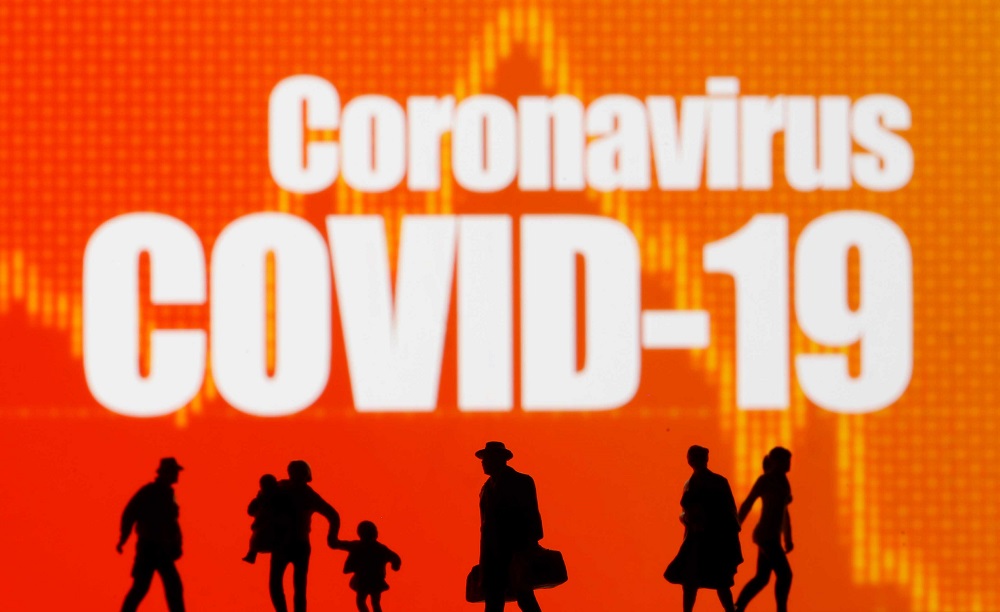Evidence suggests density control measures working in slowing COVID19 hospitalisation rate: NY Gov

New York Governor Andrew Cuomo has said that the strict social distancing and density control measures are paying off, as the exponential rate of hospitalisations has slowed but emphasised that still more needs to be done to control the spread of the deadly coronavirus which has infected over 30,000 people in the US state. During a press conference on Wednesday, Cuomo said that the number of patients being hospitalised was doubling every two days on Sunday, but on Tuesday, it was only doubling every 4.8 days.
"This is very interesting. The evidence suggests that the density control measures may be working," Cuomo said. "On Monday, the number suggested that the hospitalisations were doubling every 3.4 days. On Tuesday, the projection suggested that the hospitalisations were doubling every 4.8 days,” he said, adding “that is almost too good to be true.” Given the extreme density in New York, the virus has been spreading at an alarming rate. The statewide total of confirmed cases now stands at 30,811. The coronavirus pandemic has infected more than 459,800 people and at least 20,846 people have died.
“The theory is given the density that we're dealing with, it spreads very quickly. But if you reduce the density you can reduce the spread very quickly. So, these projections... this is a very good sign and a positive sign," he said cautioning that while this assessment may not be 100 per cent accurate, “but the arrows are headed in the right direction. And that is always better than the arrows headed in the wrong direction.” He stressed that the stringent measures and “burdensome requirements” put in place across the state, including closing restaurants, non-essential businesses, schools and work places are proving to be effective. “Yes, they are burdensome. By the way, they are effective and necessary and the evidence suggests at this point that they have slowed the hospitalisations and this is everything,” he said.
Cuomo cited the example of Westchester County that had recorded the most cases as the virus had begun to spread in the state early March. The County currently has 4,000 cases but the cases there have “dramatically slowed” from what was an exponential increase. The rate of infection can be slowed as is evident in Westchester Country. “That was the hottest cluster in the United States of America. We closed the schools, we closed gatherings, we brought in testing and we have dramatically slowed the increase. So we can slow it and we have slowed it.” Cuomo said of the 30,000 cases tested positive for the virus, 12 per cent were hospitalised and three per cent are in the Intensive Care Unit. However, Cuomo stressed that a lot more measures have to be taken to flatten the curve on COVID-19 cases in the state. Cuomo said that to date 40,000 healthcare workers, including retirees and students, have signed up to volunteer to work as part of the state's surge healthcare force during the ongoing COVID-19 pandemic, with more expected to sign up in the coming weeks. Additionally, more than 6,000 mental health professionals have signed up to provide free online mental health services. New York City will also pilot closing streets to vehicles and opening them to pedestrians as part of the city's plan to address the lack of adherence to social distancing protocols. As part of the plan, the Governor is also enacting a voluntary playground social density protocol that prohibits close contact sports such as basketball.
The Governor also urged the federal government to implement a "rolling deployment" of equipment and personnel to address the critical needs of hotspot areas with high numbers of positive COVID-19 cases instead of providing limited quantities to the entire country at once. As part of the plan, the Governor has pledged to personally manage the deployment of supplies and equipment and technical assistance to the next hotspots around the country once New York State's number of hospitalisations begins to decrease. "New York is the canary in the coal mine - we have the most positive cases in the nation and the most critical need for equipment and personnel," Cuomo said.
"We are doing everything we can to flatten the curve and slow the infection rate so the influx of hospitalizations doesn't overwhelm our healthcare system.” He said while thousands of New Yorkers have selflessly volunteered to be part of the state’s surge healthcare force and support the hospital surge capacity, “but we need more ventilators and more hospital beds now, and we need the help of the federal government to get them." "Different regions have different curves at different times, but New York is first, and once we get through this we can use our experience and supplies to help other states to get through this pandemic," he added..
(This story has not been edited by Devdiscourse staff and is auto-generated from a syndicated feed.)
- READ MORE ON:
- Andrew Cuomo
- New York
- Westchester County
- New York City










